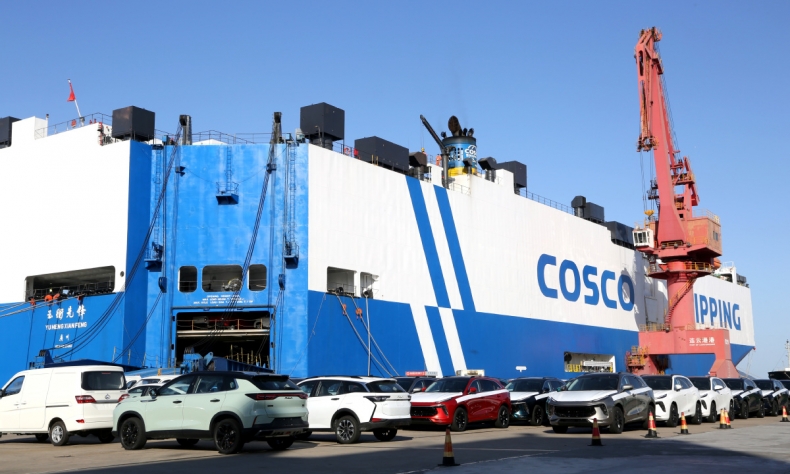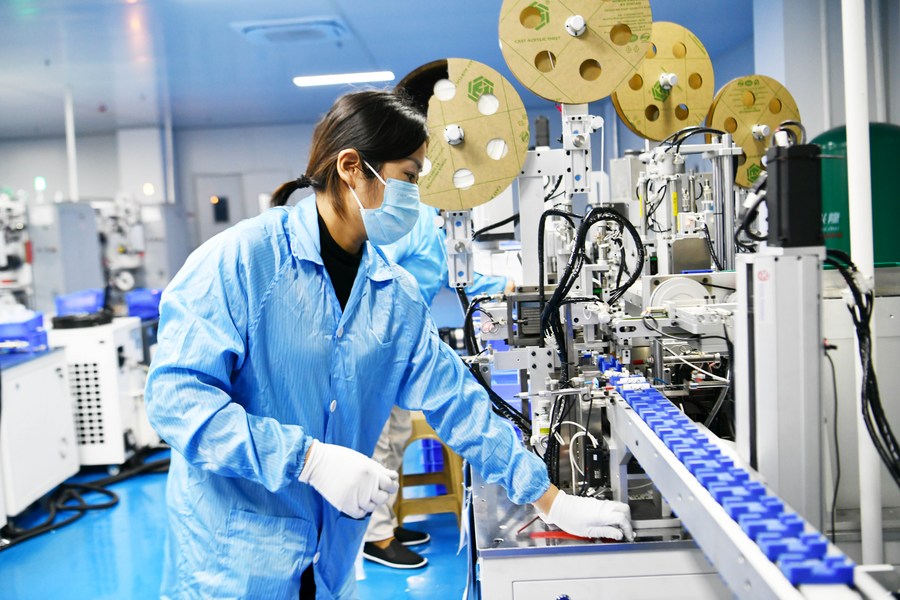Out with the Old, In with the New

The surging export of products from the ‘new three’ categories reflects both the world’s strong demand for environmentally friendly products, as well as China’s willingness to share its green achievements with the global community.
Due to their excellent performance on China’s export goods list in 2023, electric vehicles, lithium-ion batteries and solar cells, have emerged as the “new three” in foreign trade. This is a shift from the former focus on the “old three” categories of clothing, furniture and household appliances.
The move from the “old three” to the “new three” underlines the evolution of China’s economic growth model. The former comprise labor-intensive products, while the latter consist of technology-intensive products. China’s manufacturing industry has transitioned from producing low value-added products to high value-added ones, driven by technological innovation and the adoption of green and low-carbon technologies. Overall, this transformation indicates the Chinese economy is entering a new stage of high-quality development, aka a shift toward a more sustainable, efficient and innovative mode of economic growth.
This development bodes well for the global economy, presenting a great opportunity for all stakeholders. In 2023, the export value of the “new three” was 1.06 trillion yuan ($147 billion), exceeding the 1-trillion-yuan ($138 billion) mark for the first time, with a notable year-on-year growth of 29.9 percent. These export data highlight China’s proactive role in promoting green development within the world economy.
The current international technological revolution and industrial transformation are increasingly following a low-carbon trajectory. Accelerating the transition is now a shared global consensus as well as a responsibility for all parties involved.
China stands at the forefront of green and low-carbon development, particularly in the fields of clean energy and transportation fueled by new-energy sources. It is currently the world’s largest producer, consumer and exporter of electric vehicles, lithium-ion batteries and solar cells.
China’s remarkable progress can be largely attributed to a fundamental shift in the Chinese Government’s approach to economic and social development.

In the early stages of the country’s reform and opening-up policy, which began in 1978, China initially adopted a resource-intensive development model that heavily relied on labor and natural resources.
The reliance on labor resources led to the rapid expansion of labor-intensive industries, creating a significant number of jobs but also resulting in the production of low value-added products. Plus, the dependence on natural resources resulted in high energy consumption and pollution, posing big challenges to China’s economic and social progress.
A new philosophy calling for innovative, coordinated, green, open and shared development was introduced during the Fifth Plenum of the 18th Communist Party of China (CPC) Central Committee in 2015.
Additionally, the report to the 20th CPC National Congress, which convened in 2022, highlighted the importance of achieving harmonious coexistence between humanity and nature on the Chinese path to modernization. Together, these principles are pushing forward green and low-carbon development initiatives across various industries and sectors in the country.
Against this backdrop, the “new three” are benefiting from supportive policies as well as from increasing investments in green and innovative technologies.
For instance, spending on research and development maintained double-digit growth from 2017 to 2023. By 2023, the proportion of this expenditure to GDP had risen to 2.64 percent, with its amount equivalent to China’s GDP in 1993.
Apart from policy support and capital investments, China’s strategic position within the global supply chain contributes to the success of the “new three” in both domestic and global markets.
Modern manufacturing hinges on global cooperation given no single country can independently produce all the necessary components. For example, a large portion of the lithium used in the production of lithium-ion batteries in China is sourced from Australia, Argentina, Chile and Peru.
China’s achievements in green and low-carbon development can contribute to global cooperation. The surging export of products from the “new three” categories reflects both the world’s strong demand for environmentally friendly products, as well as China’s willingness to share its green achievements with the global community.
 Facebook
Facebook
 Twitter
Twitter
 Linkedin
Linkedin
 Google +
Google +










